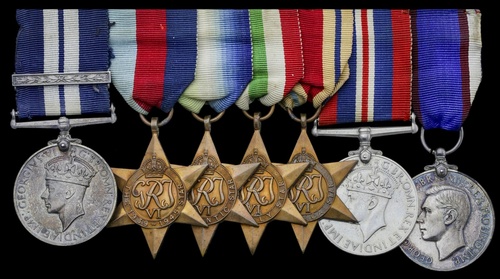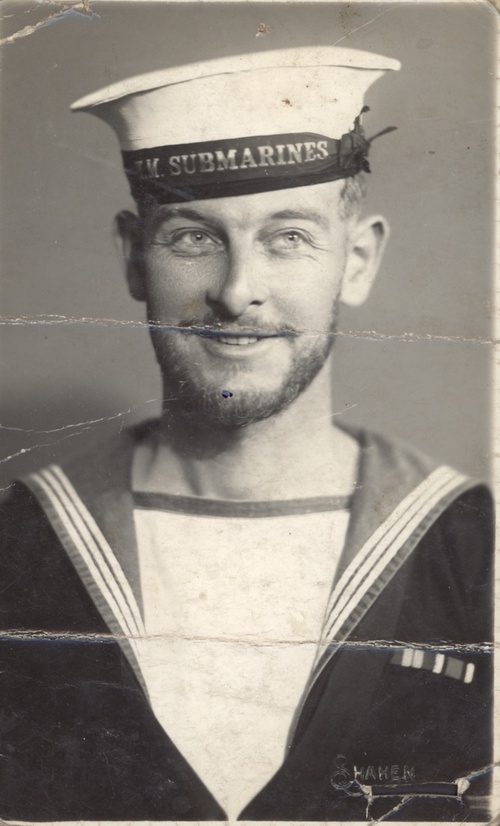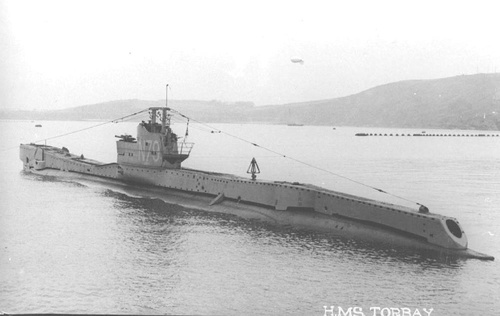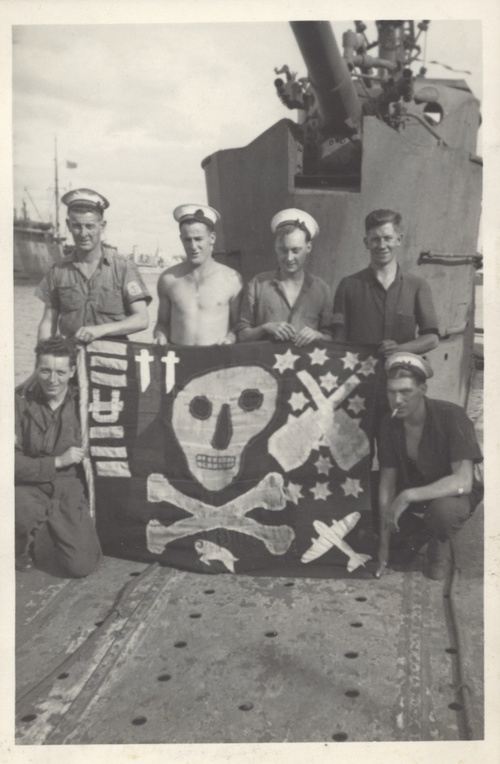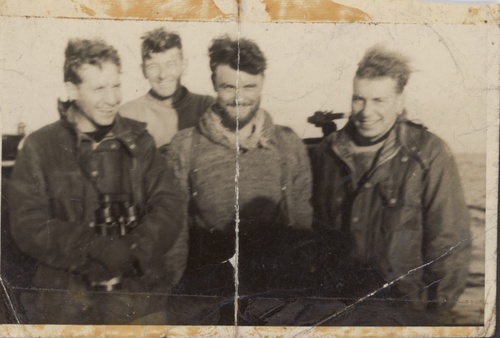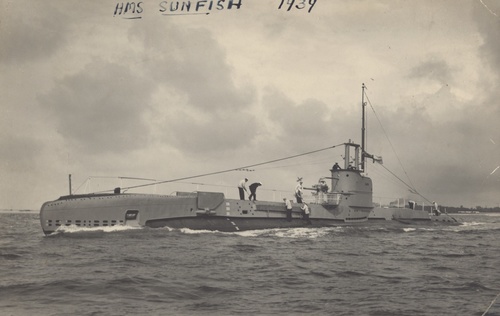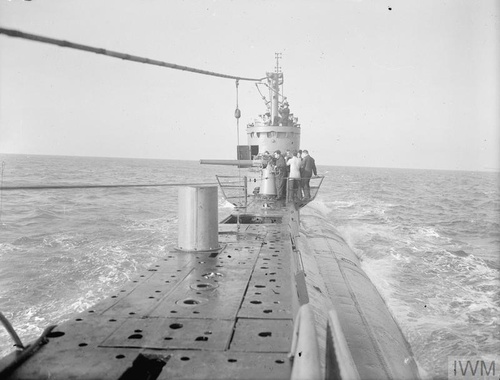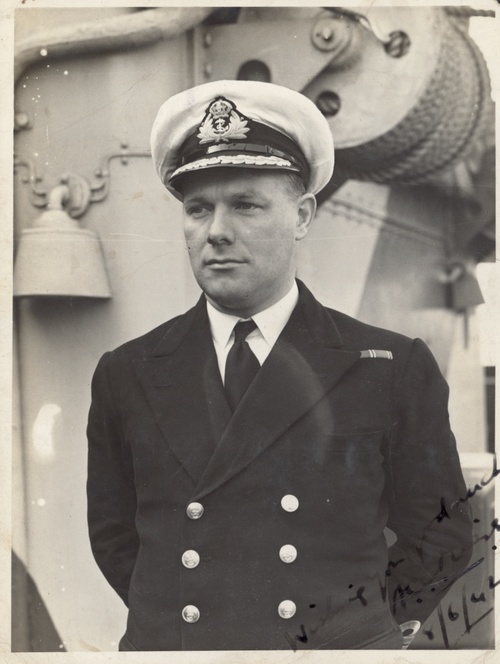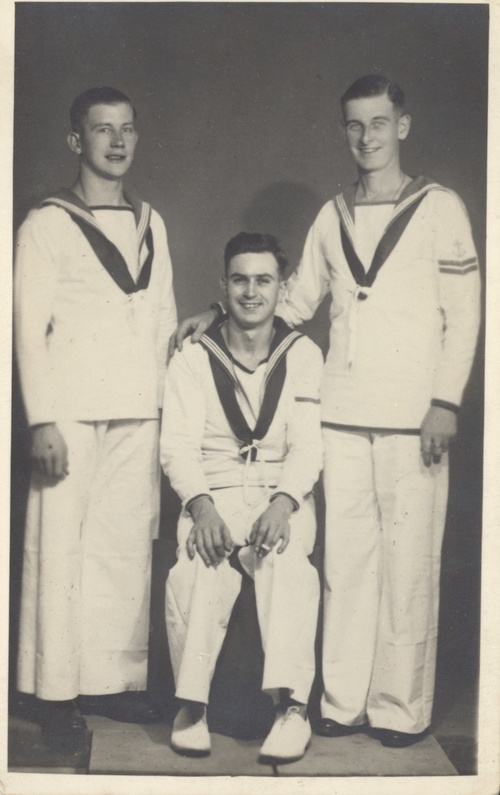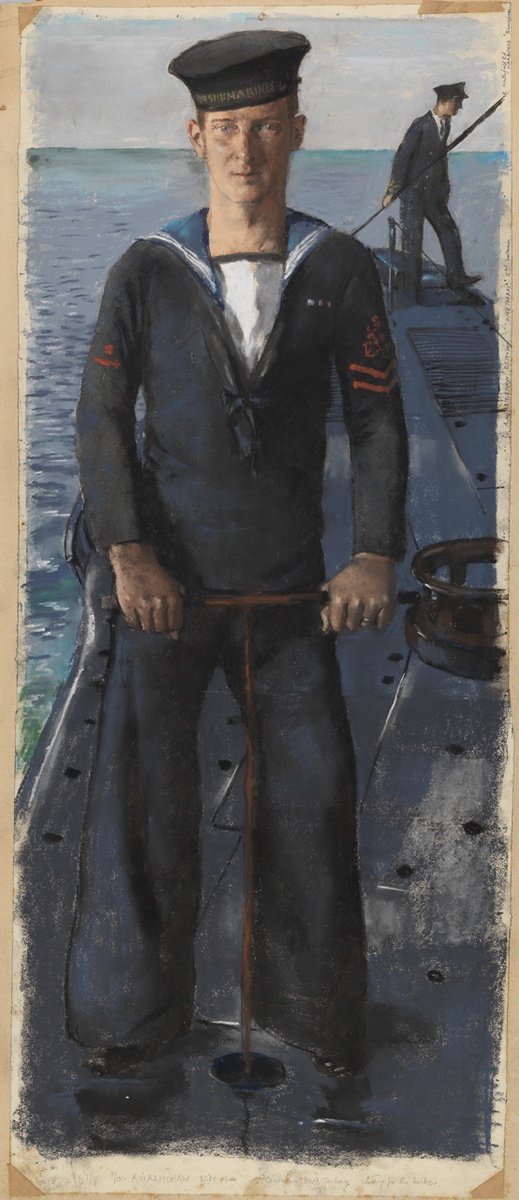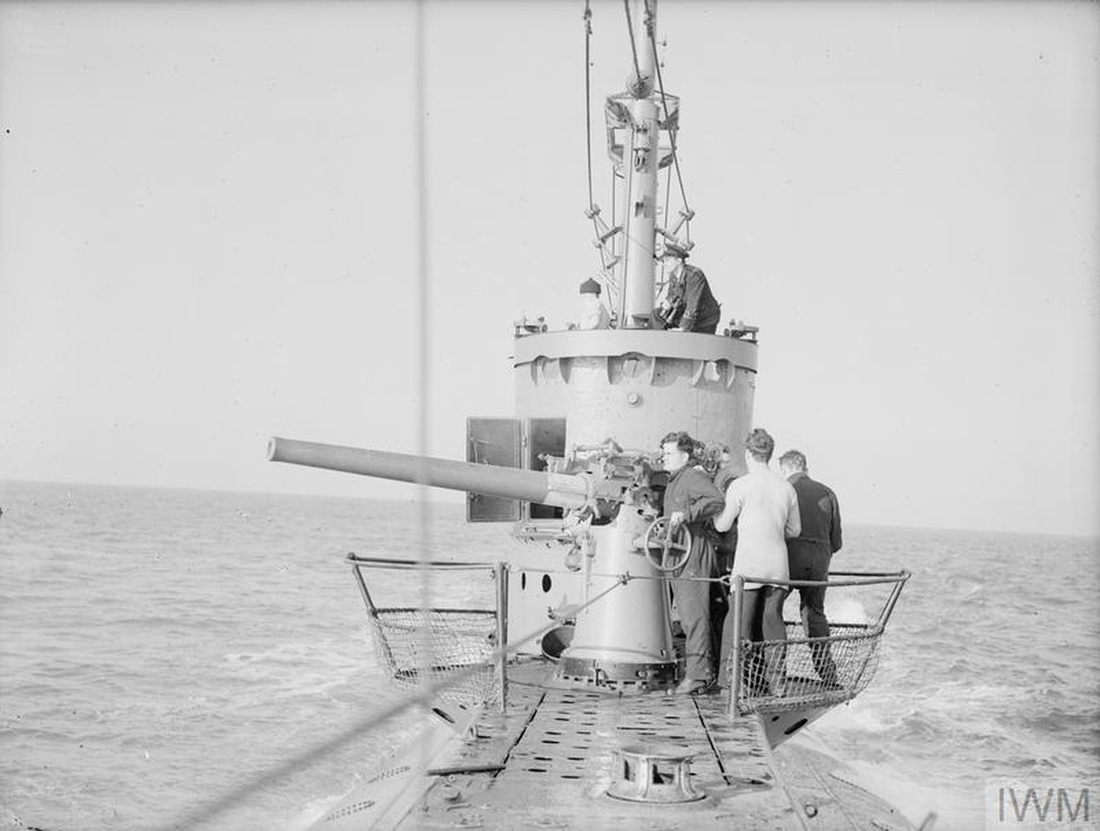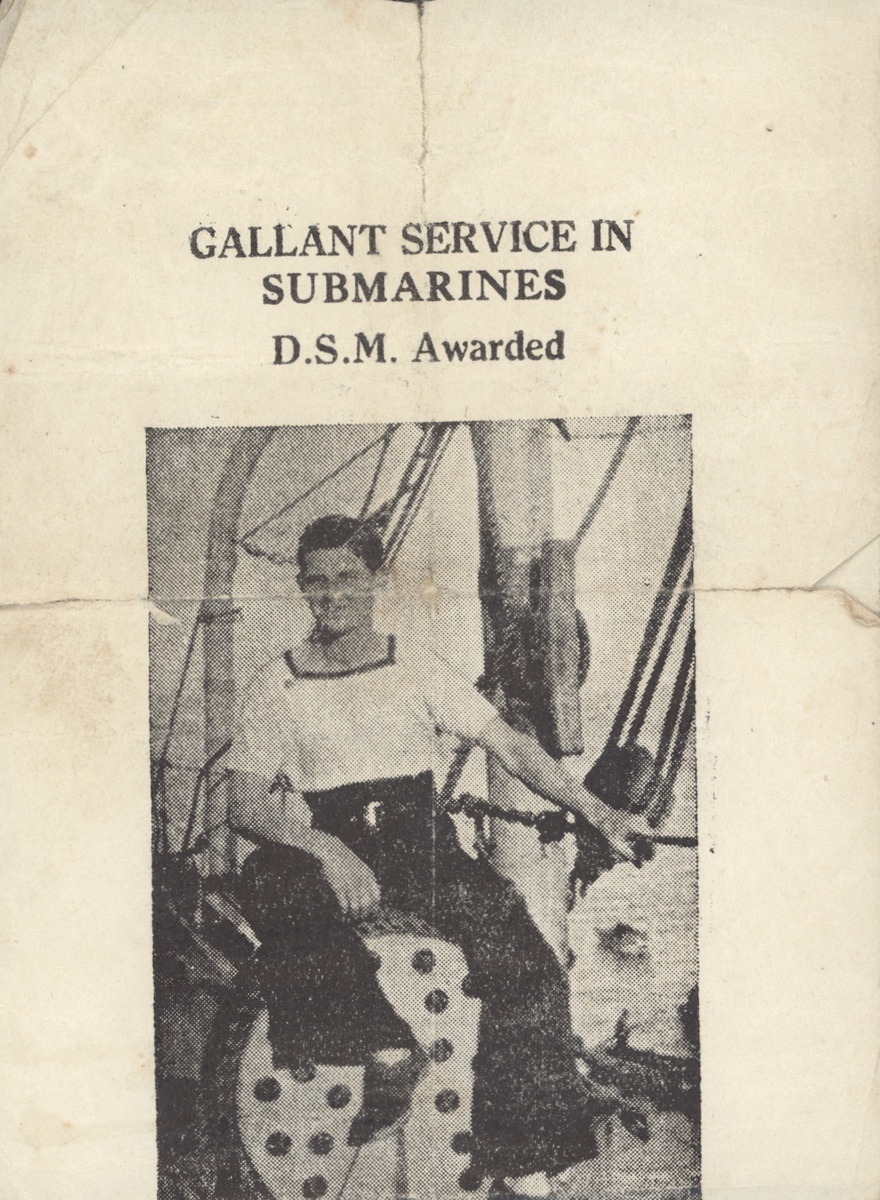Auction: 20002 - Orders, Decorations, Medals & Space Exploration
Lot: 544
Sold by Order of a Direct Descendant
An important and rare Second War Submariner's D.S.M. and Bar group of seven awarded to Chief Petty Officer A. W. I. Armishaw, Royal Navy, decorated for his service aboard the Sunfish in Norwegian waters in 1940 who added a Second Award Bar aboard Torbay for her devastating and daring attack on enemy shipping in Corfu Harbour
The latter engagement resulted in the award of the Victoria Cross to Commander Anthony Cecil Capel Miers, D.S.O.
Distinguished Service Medal, G.VI.R., swivel suspension, with Second Award Bar (J.112573 A. W. I. Armishaw. A.B. H.M.S. Sunfish), officially impressed naming; 1939-34 Star; Atlantic Star; Italy Star; War Medal 1939-45; Royal Fleet Reserve L.S. & G.C., G.VI.R. (J.112573 (PO.B. 18250) A. W. I. Armishaw. A.B. R.F.R.), mounted as worn, good very fine (7)
D.S.M. London Gazette 9 May 1940.
Bar to D.S.M. London Gazette 7 April 1942.
Augustus William Illesly Armishaw was born on 27 March 1908 at Yardley, Worcestershire, the eldest son of William and Edith Lucy Armishaw of Northwick Road, Evesham (The Evesham Standard, refers). He came from a family with a strong military tradition, his father - a Midland 'Red' bus driver - having served over three years in France with the Royal Field Artillery and Royal Army Veterinary Corps during the Great War. His grandfather William Illesly Armishaw served throughout the Crimean War and Indian Mutiny with the 11th Hussars (The Tewkesbury Register, refers). Employed as a machinist, Armishaw attested for the Royal Navy as Boy 2nd Class on 27 March 1926 and was initially posted to Ganges. Sent to Columbine, Vernon and Cleopatra, he joined the submarine depot ship Titania as Able Seaman on 11 April 1929 and transferred to Submarine Service shore establishment Dolphin at Gosport on 3 April 1930. He witnessed extensive service in the Mediterranean and China Stations, before being demobilised on 2 October 1938.
Contemporary press reports note that Armishaw returned home to Great Barr, Birmingham, and took brief employment as an electrician at Kynoch's. Founded at Witton in Birmingham in 1862, the company specialised in the manufacture of ammunition and became a brand name for sporting cartridges. Called up to the Royal Naval Reserve on 1 September 1939, Armishaw returned to Dolphin and was posted to the submarine Sunfish on 26 September 1939. Commissioned at Chatham on 2 July 1937, and refitted from March 1939 at No. 8 dry dock, Chatham, Sunfish was a formidable adversary. Armed with 12 torpedoes, a 76mm gun and a machine gun, she was capable of 10 knots at submerged speed. Placed under the command of Lieutenant Commander J. E. Slaughter, Armishaw and his 38 fellow submariners were soon deployed to Dundee and Blyth as part of the 2nd Submarine Flotilla. From these bases, the Sunfish was able to conduct regular forays into the North Sea, one of which provided a close, if unsuccessful, attack on the German submarine U14 in February 1940. Interestingly, despite the devastating casualties suffered by the Unterseebootwaffen and the fact that the Sunfish had managed to fire four torpedoes in quick succession, the U14 survived six operational patrols and was a rare survivor with no known casualties during the war.
Warm homecoming from icy waters
Transferred to Lowestoft and on to Harwich in March, Sunfish conducted her ninth war patrol on 2 April 1940. Ordered to the Skagerrak and a little east of the Skaw, Denmark, Slaughter tasted success on 9 April 1940 when he sighted and sank the German merchant shipAmasis off the town of Smogen, Sweden, just outside of territorial waters. The event is recorded in the submarine's log:
'1700 hours - Sighted a northbound merchant vessel approaching. She was of about 5000 tons. Closed to investigate. No neutral markings could be seen and when closer she was seen to fly the German ensign. Started attack. When the tubes were ready, fired two torpedoes. One hit and the ship started to settle by the stern. The crew started to abandon ship. Closed to identify the target but had to go deep when an aircraft approached' (U-Boat.net, refers).
Although not part of the invasion force, the loss of her 7,300 tonnes cargo of coal no doubt proved a considerable loss to the German military machine (No Room for Mistakes: British and Allied Submarine Warfare 1939-40, refers).
The following day, 10 April 1940, Sunfish attacked the German merchant vessels Hanau and Leuna with torpedoes. Both appeared to miss. Unfazed, Sunfish remained vigilant and was rewarded with the sinking of the merchant vessel Antares in the Kattegat at around 2000hrs, before submerging and taking an opportunistic shot at a 3000-ton merchant ship just before midnight. The torpedo missed its target. The next morning Sunfish sighted eight enemy A/S trawlers travelling line ahead at 7000 yards distant. Hearing ASDIC pulses, Slaughter recognised the odds were against his crew and chose not to hunt. Instead he remained submerged and was rewarded for his patience with a darkened merchant vessel at 2200hrs. He attacked using a single torpedo, watching through his periscope as his target sank to the depths 'slowly by the stern'. Six enemy A/S vessels soon returned to the scene, buzzing around the wreck site, but Slaughter and his crew were by this time a long way off having brazenly escaped at speed on the surface.
12 April 1940 witnessed more drama with the attempt on the German 'Q-Ship' Schiff 40 in the Kattegat and another on an enemy merchant vessel not long thereafter. Both torpedoes missed on this occasion, but the crew were no doubt heartened by the damaging of Schiff 40 the following day. In consequence, the enemy shipping lanes became ever more vulnerable to the attention of Sunfish:
'1200 hours - Came to periscope depth for routines. Sighted a 3000 tons southbound merchant vessel with no ensign or markings. She was giving out A/S impulses. Started attack. 1222 hours - Fired 2 torpedoes. One hit was obtained forward. The crew abandoned ship and she drifted towards Gronskaren rocks with her propeller still moving. The ship was not observed to sink but is undoubtedly a total loss' (ibid).
On 14 April 1940, Sunfish achieved further success with the destruction of the German Schiff 35, followed by the successful sinking of a zig-zagging merchant ship 'of about 6000 tons' using two further torpedoes. Likely running low on torpedoes and aware of the vulnerability of his submarine on the surface when using guns, this turned out to be the final victim of Slaughter and his crew on this patrol; turning for home, they arrived back at Harwich on 19 April 1940, the men afforded 10 days' leave before their next foray into enemy waters.
For his bravery and distinguished service in Norwegian waters, Armishaw was awarded the D.S.M., a contemporary newspaper article speculating that his submarine had proved successful in sinking 17,000 tons of enemy shipping off the fjords (The Evesham Standard, refers). However, on returning to his wife, Armishaw was keen to stress that it hadn't been as smooth a patrol as the newspapers may have liked to portray:
'When on leave in Evesham about three weeks ago, he described the adventurous trip as 'irritating' as did all the members of the crew when being attacked by depth charges from enemy warships' (The Tewkesbury Register, refers).
Fresh start
Promoted Temporary Acting Leading Seaman, Armishaw was transferred to the T-Class submarine Torbay on 1 April 1941 under the command of Lieutenant-Commander Anthony Cecil Chapel Miers; later Rear-Admiral, V.C., K.B.E., C.B., and D.S.O. & Bar. He arrived just in time to patrol around the French port of Brest in order to observe any potential movements of the newly arrived enemy capital ships Gneisenau and Scharnhorst. Sent on to Gibraltar, Armishaw and his crew enjoyed a short period of rest before venturing on to Alexandria via Sardinia and Sicily, arriving on 13 May 1941.
Venturing out on their third war patrol, Torbay opened her account on 1 June 1941 when she sank a fully-laden German-controlled Greek caique with gunfire in the Doro Channel. A second round of gunfire hit the vessel aft, and was followed by a 'violent explosion which blew the stern off, and a cloud of yellow smoke enveloped the target'. Two days later Miers succeeded in sinking the Greek caique Menelaos by gunfire off Mitylene, Lesbos, and on 6 June 1941 torpedoed and damaged the Vichy French tanker Alberta off Cape Hellas. She was later observed shattered by fire and aground on the shoal to the north of Rabbit Island, where it was decided by the officers aboard Torbay to leave her to her fate rather than waste a torpedo - hoping that she would break up in the next gale.
With conditions calm and the enemy keen to retrieve her cargo, Miers was forced to 'finish off' the hapless Alberta on 10 June 1941 with 40 rounds from the deck gun. He also attempted to torpedo the Italian tanker Utilitas and the Romanian merchantman Alba Julia, but both 'fish' failed to detonate, Miers relying on the old adage 'third time lucky' to finally score a kill that day with the demise of the 3319-ton Italian tanker Giuseppina Ghirardi. Then Torbay went to the deep, surfacing many hours later at Sigri Island to recharge batteries and take stock.
For the officers and crew aboard Torbay, life became a constant game of cat and mouse. On 11 June 1941 she - remarkably - rammed and sank the Greek caique Poseidon about 15 nautical miles south of Lesbos, contemporary accounts noting that 'Miers decided to destroy the vessel by ramming as he did not want to use his gun while he was escaping the area of his previous sinkings'. He allowed the Greek crew to abandon ship before completing the destruction, no doubt very aware that every second on the surface left the Torbay vulnerable to increasing enemy torpedo boat patrols and the inevitable threat of depth charging.
Further successes mounted, with the destruction of the Italian merchant Citta di Tripoli on 2 July 1941 and the caique Evangelistria on 4 July 1941 using both Lewis guns. The following day Miers succeeded in torpedoing the Italian submarine Jantina in the Aegean, but had a close call when the Torbay was violently shaken by a tremendous double explosion in consequence of an attack by an unseen enemy aircraft. Learning his lesson, Miers abandoned an attack off Cape Malea on 8 July 1941, when a schooner was seen to be full of troops and stores 'and was wearing the German flag'. After firing a few rounds from the Lewis gun, Torbay disengaged in haste and dived to the depths upon the feint sound of another enemy aircraft summoned to the rescue.
Knowing when to fight and when to retreat proved a consistent strength for the crew aboard Torbay. On 9 July, the men reverted to using scuttling charges to dispatch the German sailing vessel L XII, and followed this with a successful torpedo attack on the Italian oiler Strombo. Escorted by aircraft and a zig-zagging torpedo boat, Miers and his crew received a taste of their own medicine when they were counter-attacked by 13 depth charges, 'some of which were extremely close'. Torbay went deep again, enabling the wounded Strombo to limp into a friendly port with two dead aboard. From 1700hrs Torbay began to get the full attention of the enraged Italian escort Calatafimi and two further destroyers. Twenty-five depth charges rained down, but none were close. Lacking any further torpedoes and with only 19 rounds for her deck gun left, Miers simply sat it out at depth before proceeding to Alexandria and two weeks of leave.
'He will either be court martialled or will win the Victoria Cross'
Largely unknown at the time, the events of 9 July 1941 were later brought to life by the former Royal Naval Officer and Scottish broadcaster Sir Ludovic Henry Coverley Kennedy. Described by contemporary naval officers as 'never a good loser' (The Express, refers), he was 'fiercely competitive and determined, from his youngest years, to win - whatever and however' (V.C. Online, refers). Nevertheless, Miers fulfilled one of his tutor's prophesies at Wellington College when he was court martialled in 1925 for attempting to strike a Stoker, the confrontation occurring at around the time of a football match. Dismissed from his ship, Miers was sent to Hong Kong as First Lieutenant of the submarine Rainbow. Here he acquired the lower-deck nickname 'Gamp' - after the Charles Dickens character fond of carrying an umbrella.
In 1989, his actions were brought once again to the fore by an extract from Kennedy's book which described a vicious engagement between Torbay and a ship carrying German infantry. Amidst the confusion of war, it was alleged that Miers gave an order to open fire with a machine gun upon German troops in a dinghy. The fate of the enemy remains unclear to this day, with conflicting accounts of guns being pointed and a possible grenade being thrown. The events were witnessed and reported by First Lieutenant Paul Chapman who reported that 'everything and everybody was destroyed by one sort of gunfire or another' (War Beneath the Sea, refers), the true events remain unconfirmed. Having passed away at his home in Inverness, Scotland on 30 June 1985, Miers was unable to defend the points raised in the book.
V.C. Action and Bar to D.S.M.
After conducting nine successful patrols aboard Torbay in the Mediterranean theatre, Miers and his crew ventured back to their old hunting grounds of the Greek coast in March 1942 in what was hailed as one of the most remarkable submarine patrols carried out during the war. They were joined once again by a newly-promoted Petty Officer Armishaw, by now a seasoned veteran.
On 4 March 1942, Miers sighted a northbound enemy convoy of four troopships entering the South Corfu Channel and since they were too far off for an initial attack, he decided to follow in the hope of catching them in Corfu harbour. During the night of 4-5 March, Torbay approached undetected up the channel amidst 'glassy' sea conditions, charging her batteries and waiting for the right moment to strike. The following morning he launched a devastating attack on two store ships in the harbour, his brazen attack creating chaos and leading to significant and sustained retaliation.
The citation for the Victoria Cross to Miers gives a good account of his tactical genius and the professionalism and patience of his crew:
'For valour in command of H.M. Submarine Torbay in a daring and successful raid on shipping in a defended enemy harbour, planned with full knowledge of the great hazards to be expected during seventeen hours in waters closely patrolled by the enemy. On arriving in the harbour he had to charge his batteries lying on the surface in full moonlight, under the guns of the enemy. As he could not see his target he waited several hours and attacked in full daylight in a glassy calm. When he had fired his torpedoes he was heavily counter-attacked and had to withdraw through a long channel with anti-submarine craft all round and continuous air patrol overhead' (London Gazette 7 July 1942, refers).
The impressive medal group of Miers forms part of the Lord Ashcroft Collection and are displayed in the Ashcroft Gallery, Imperial War Museum, London.
The award of the Bar to the D.S.M. of Armishaw for this action and further awards to the crew aboard Torbay are described in a contemporary newspaper article published by the Hampshire Telegraph & Post on 31 July 1942:
'Naval V.C.
Torbay Crew Decorations
The Commanding officer, three other officers and 24 of the crew of H.M Submarine Torbay were decorated by the King at a recent investiture at Buckingham Palace - the first time officers and men of one naval ship had received their decorations at the same investiture.
The commanding officer, Comdr. Anthony Cecil Capel Miers, D.S.O. (and bar), R.N., received the V.C., and other decorations were one D.S.O., two D.S.C. bars, 23 D.S.M.s, and four bars to the D.S.M.
Torbay stalked an Axis troop convoy into harbour, remaining there for 17 hours, and though hunted by many anti-submarine craft, torpedoed two large supply ships in full daylight.
In the past year the submarine has sunk or damaged 70,000 tons of enemy shipping in the Mediterranean, and up to June her "bag" included five supply ships, two tankers, 21 auxiliary craft sunk (22 of the 28 by gunfire), a destroyer and two supply ships badly damaged and a destroyer, probably sunk.
Comdr. Miers told the Press Association Court Correspondent, "The King congratulated me and said that he was glad to have the opportunity of meeting members of the ship's company…"
Three of the ratings received the D.S.M. and bar, and one Petty Officer, Augustus Armishaw, the bar to the D.S.M.'
Promoted Acting Chief Petty Officer on 19 January 1943, Armishaw remained in the service of the Royal Navy but appears to have spent much of the remainder of the war on shore. Sent to Medway in September 1943, he later returned to Dolphin, before being sent to the Royal Naval Hospital at Chatham on 27 June 1945. Invalided from the service on 22 August 1945, he died at Bromyard, Herefordshire, in 1979.
Sold together with a most impressive and complete archive of original material comprising:
(i)
Certificate of Service and Qualification, besides Torpedo History Sheet and a large number of further qualification sheets.
(ii)
A number of letters of congratulations following his awards, including those from his employers.
(iii)
Large photograph album covering the recipient's career - including images in action and at rest, besides a quantity of further loose images.
(iv)
His Driving Licence and Royal Automobile Club Membership Card.
(v)
A most interesting and hitherto unpublished account, 22pp, Torbay - A fiction story with some non-fiction facts, written in ink.
(vi)
Letter of condolence from Rear-Admiral Miers, on his headed paper, dated 12 June 1979, upon the death of Armishaw.
(vii)
His whistle and cap tally.
(viii)
Birmingham & Midland Motor Omnibus, 25 Year Long Service illuminated certificate, in the name of William Armishaw, dated 24 July 1943, glazed and framed.
Subject to 20% VAT on Buyer’s Premium. For more information please view Terms and Conditions for Buyers.
Sold for
£5,000
Starting price
£5000

